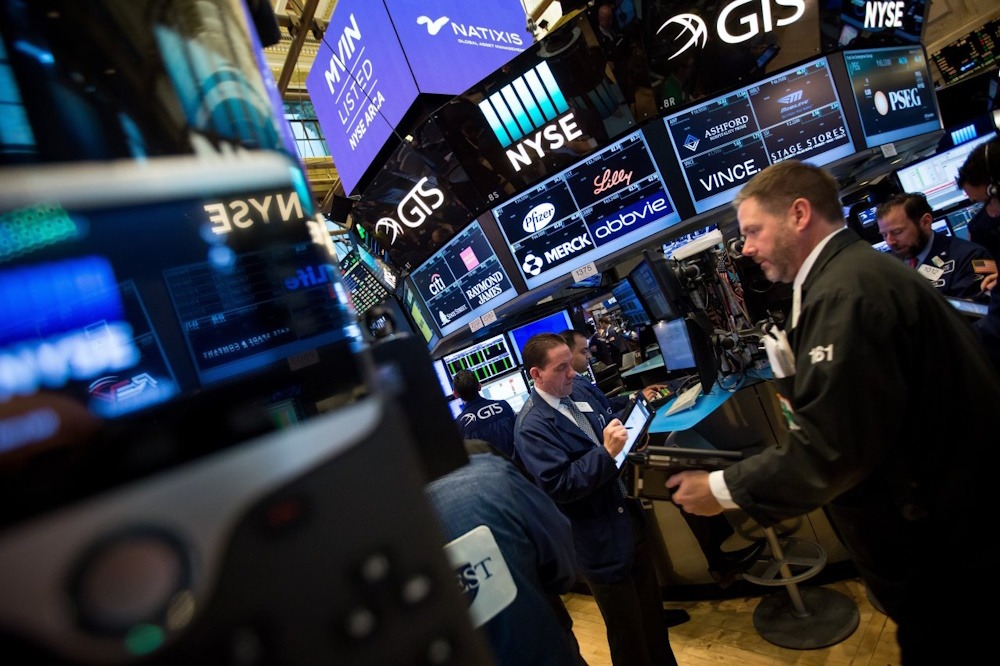
U.S. stock index futures experienced a modest decline on Thursday as market participants anticipated the commencement of the Federal Reserve’s Jackson Hole symposium, seeking insights into forthcoming interest rate adjustments. At 05:40 ET (09:40 GMT), Dow Jones Futures experienced a decline of 128 points, representing a decrease of 0.3%. Meanwhile, S&P 500 Futures saw a reduction of 8 points, or 0.1%, and Nasdaq 100 Futures fell by 11 points, also reflecting a 0.1% drop.
The major indices exhibited a mixed performance on Wednesday, as the Dow Jones Industrial Average recorded a modest gain, whereas both the S&P 500 and the NASDAQ Composite experienced declines. This resulted in a four-day decline for the broad-based S&P 500, as technology stocks experienced another day of significant selling pressure. Apple experienced the most significant decline, with a nearly 2% decrease, whereas Nvidia demonstrated relative resilience, suffering the least after substantial losses earlier in the week. Technology stocks experienced a decline primarily due to increasing skepticism regarding the profitability of artificial intelligence, particularly in light of a sharply critical report issued by a division of the Massachusetts Institute of Technology. The report indicated that 95% of organizations were experiencing “zero return” on their AI investments, casting skepticism on the exuberance surrounding AI, which has significantly influenced Wall Street and technology stocks this year. The report arrives merely a week prior to the quarterly earnings announcement from AI leader Nvidia, which will be scrutinized for additional insights into the rapidly expanding sector.
Wall Street indexes reacted negatively to the somewhat hawkish signals indicated in the minutes of the Fed’s July meeting. The minutes indicated that a significant number of Federal Reserve members predominantly endorsed the central bank’s cautious stance regarding interest rate reductions, reflecting concerns about the inflationary consequences stemming from President Donald Trump’s trade tariffs. The central bank appeared to be placing greater emphasis on inflation risks rather than concerns regarding a potential downturn in the U.S. labor market, which may lead to another pause in September. Fed Chair Jerome Powell is scheduled to address the Jackson Hole Symposium on Friday, providing further insights into policy direction. The upcoming central bank gathering is scheduled to commence later in the session. Prior to this event, weekly jobless claims are anticipated, with expectations indicating a modest rise in the number of Americans filing for unemployment benefits for the first time. Data on existing home sales for July, along with the Philadelphia Fed’s business index, is set to be released soon.
On the corporate front, retail giant Walmart is set to report earnings on Thursday, offering up more cues about the health of the U.S. consumer. The world’s largest retailer by sales is anticipated to disclose earnings of 74 cents per share, reflecting an increase of nearly 11% compared to the previous year, alongside revenue projections of $176.16 billion, representing a 4% rise. Walmart’s low-price strategy and its strong position in the grocery sector provide it with a competitive advantage during economic downturns. The company has exceeded earnings expectations for 11 consecutive quarters, as reported by LSEG data, resulting in a significant increase in its valuation, in contrast to the challenges faced by other consumer staples firms this year. The week has witnessed several large retail chains releasing their financial results. Home Depot initiated the week on a positive note on Tuesday, whereas Target experienced a decline on Wednesday following the appointment of insider Michael Fiddelke as CEO and the maintenance of annual forecasts that had been adjusted downward in May.
On Thursday, oil prices experienced an increase, contributing to a series of recent gains, supported by indications of robust demand in the United States, which stands as the largest energy consumer globally. At 05:40 ET, Brent futures experienced an increase of 0.9%, reaching $67.47 per barrel, while U.S. West Texas Intermediate crude futures saw a rise of 1.1%, climbing to $63.38 per barrel. Both contracts experienced an increase of over 1% in the previous session. According to the U.S. Energy Information Administration, there was a notable decrease in U.S. crude inventories, which fell by 6 million barrels last week. Additionally, gasoline stocks experienced a decline of 2.7 million barrels, surpassing expectations in both cases. This suggests a consistent level of demand during the height of the summer travel period, which aids in alleviating certain apprehensions regarding global economic instability.
